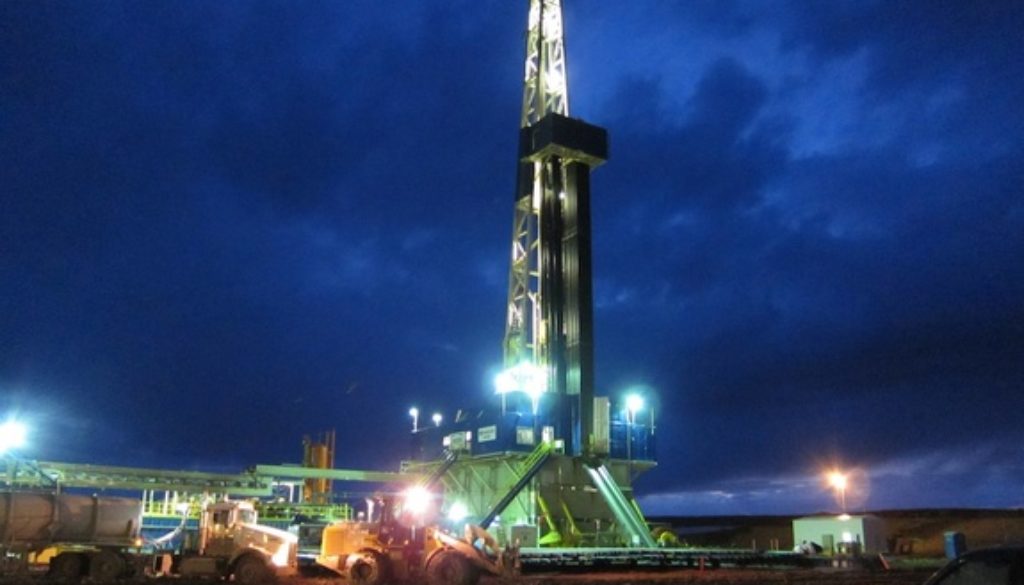Methane Causes Climate Change: Here’s How the President Plans to Cut Emissions by 40-45 Percent
By Amanda Frank, Center for Effective Government
Earlier this week, the Obama administration announced its proposed rule to cut future methane emissions from oil and gas production. Methane contributes 10 percent of greenhouse gas emissions from human activities that are warming the earth, so the rule is a step towards meeting our climate change targets.
However, disappointingly, the rule does not apply to existing wells, pipelines, refineries, and other infrastructure, which together contribute 90 percent of current total methane emissions from the oil and gas industry. The oil and gas industry produces almost a third of all methane emissions, so exempting existing facilities is problematic.
The rule also targets the volatile organic compounds (VOCs) that pollute the air and contribute to smog formation, but as with methane, it only cuts them at new and modified oil and gas sources, and a limited number of existing sources.
Last week the, the Environmental Protection Agency (EPA) announced plans to reduce methane emissions from landfills, which contribute nearly one-fifth of all U.S. methane emissions.
To date, however, there are only voluntary guidelines for limiting methane from the agriculture industry. Agriculture produces 36 percent of total methane emissions and is the single largest source of methane in the U.S.
***
On Jan. 14, the Obama administration announced its strategy to reduce oil and gas industry methane emissions by 40-45 percent over the next decade. This is a key element of the administration’s Climate Action Plan for reducing greenhouse gases and curbing climate change.
Methane (i.e., natural gas) is a greenhouse gas with several times the global warming potential of carbon dioxide. The oil and gas industry contributes nearly 30 percent of all U.S. methane emissions, second only to agriculture (36 percent). Reducing methane emissions from this and all industries is crucial to addressing climate change. And a recent poll found that an overwhelming majority of American voters support stricter limits on methane emissions from oil and gas development.
The President’s Plan
To achieve its methane emissions reduction goal, the administration outlined specific steps that target the production, processing, and transmission of oil and gas:
- The U.S. Environmental Protection Agency (EPA) will propose standards to reduce methane emissions from new and modified oil and gas sources. (Modified means upgrades to existing drilling and processing infrastructure or when wells are re-fracked.) The agency will issue proposed rules this spring and finalize them in 2016.
- The Bureau of Land Management (BLM) will also propose standards this spring to reduce flaring, venting, and leaks from wells on public land. “Flaring” burns excess methane onsite, which converts it to carbon dioxide and other air pollutants; “venting” simply releases methane into the air. Both practices contribute to climate change and waste this non-renewable resource.
- EPA will improve its Greenhouse Gas Reporting Program by requiring the oil and gas industry to report methane emissions during each stage of oil and gas production. The Greenhouse Gas Reporting Program tracks emissions across industry sectors and provides this information to the public.
- The administration will provide the Department of Energy with $15 million to develop technologies that reduce methane leaks during oil and gas distribution. It will provide an additional $10 million for a program that better tracks methane losses, which will improve the accuracy of EPA’s Greenhouse Gas Reporting Program.
- Finally, the administration will continue to work with the oil and gas industry to promote voluntary efforts to reduce methane emissions from existing oil and gas infrastructure.
The strategy also includes steps to reduce other byproducts of oil and gas development that contribute to ground-level ozone, a dangerous pollutant that contributes to smog and causes asthma attacks and other respiratory problems.
Is the Plan Bold Enough?
Cutting methane emissions by 40-45 percent is an ambitious goal. Without any intervention, methane emissions from the oil and gas industry are projected to increase by more than 25 percent over the next decade.
Environmental and public interest groups largely support the proposed rules and have highlighted their benefits, but some organizations believe the proposal doesn’t go far enough. For instance, the proposed rules will not affect existing oil and gas infrastructure (wells, pipelines, refineries, storage facilities, and more), which contributes 90 percent of methane emissions from the entire industry. Voluntary guidance may not be enough to convince the industry to adopt best practices for reducing emissions.
Environmental groups have also noted that no amount of regulations will make fossil fuels climate-friendly. Reducing methane emissions is important, but we need to shift to renewable energy sources.
Corporate representatives are already grumbling over the strategy, saying that the proposed rules are “redundant” because methane emissions are already on the decline. But this ignores existing policies that incentivize natural gas flaring and cost the public millions in lost revenue. New rules would ensure the decline in methane emissions is steeper and sharper.
What about the economics of the proposed regulations? According to the BlueGreen Alliance, the standards would create new jobs in the industry, upgrading our country’s aging pipelines while reducing methane emissions – a win-win for everyone.
Message to Big Oil and Gas: Protect Natural Resources, Public Health, and Our Economy
We welcome this advance in limiting methane emissions, which includes important provisions, from investments in new technologies to requirements for the disclosure of greenhouse gas emissions to restricting practices that undermine air quality.
However, stronger actions are needed, given the pace of greenhouse gas emissions growth. EPA should use its authority under the Clean Air Act to regulate methane and other greenhouse gases emitted from all oil and gas extraction, production, and storage facilities, not just new ones.

